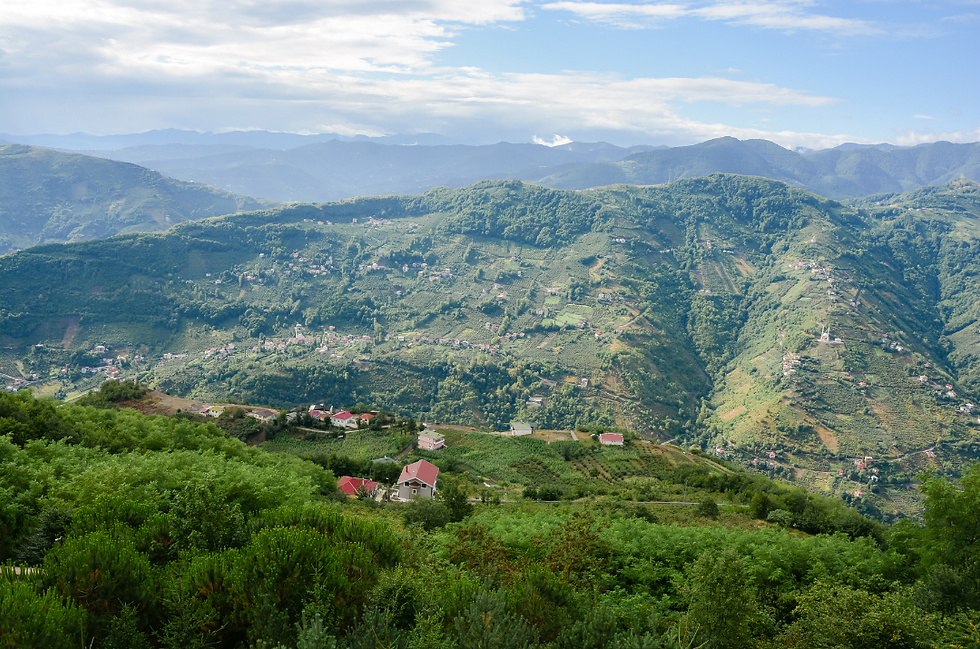Adapting BVI for Low Health Resource Environments
- Ella Steer
- Sep 10
- 4 min read
Updated: Sep 11
Bringing precise health assessments to communities where clinics are miles away and diagnostic tools are scarce may seem unfeasible. Imagine delivering actionable body composition insights integrated into your own system from only a user's smartphone or a singular tablet. No machinery, no expensive equipment.
In this post you’ll discover why harnessing a device nearly everyone already has, can empower healthcare providers and public health initiatives to accurately screen and monitor health risks, making precision health accessible to people everywhere.

Why Mobile Health Assessments Work
The BVI platform powers body composition analysis using only two smartphone taken images combined with demographic data to produce meaningful metrics like total body fat %, waist circumference and a metabolic risk score. This can all be done without bulky, expensive hardware and from the user's own home, making it suited for low-resource settings.
These findings demonstrate that smartphone body scanning isn’t just a theoretical solution, it delivers clinically valid results with widespread accessibility and minimal equipment. The BVI technology can be adopted 2 ways either through an API where it can be integrated into an existing healthcare system and users take their own scans from anywhere or via BVI Pro through a tablet the healthcare provider has which they can take the scans from. Both options are ideal for healthcare in low resource environments as they require little equipment, little travel and little time to carry out.
Use Cases within Communities with Limited Health Service Access
Rural Clinics
Community health workers can conduct or request patients to take remote BVI scans to assess risk of cardiometabolic diseases, target intervention and monitor outcomes with requiring little to no transportation of patients.
A remote village health clinic where advanced medical equipment is out of reach, yet smartphones or tablets are everywhere. With a tablet and the BVI app, the staff can capture two simple images of each patient and accurately estimate visceral fat, body fat percentage, and metabolic risk, data traditionally only available via complex gear. They can reassuringly advise a patient who is at risk enabling immediate, tailored guidance and follow up care.
Public Health
BVI can empower mass screenings in remote communities, enabling data driven interventions, personalised health education, and outcome tracking across larger populations.
Health providers can go to low resource communities to help people check their health. With the BVI technology they can set up a small station where staff can use a tablet or patients can use their smartphones to do two quick body scans. These scans give each person a report about their health risks, based on these reports staff can give out personalised advice of how to stay healthy. Because the scans are fast and easy, the staff can help lots of people and use the data to decide where to focus their efforts and resources.
Mobile Health Units
Pop up clinics can leverage BVI technology to rapidly assess community health needs without investing in heavy diagnostic equipment.
In emergency situations, like disaster zones or refugee camps, traditional diagnostic tools are rarely available. A mobile clinic equipped with a tablet and the BVI app can administer rapid, accurate body composition assessments to malnourished individuals or those at risk of metabolic disorders. These alerts inform clinical responses, prioritising urgent care for those with high visceral fat or muscle depletion.

Final Thoughts
BVI technology can break down the barriers of accessibility of precise healthcare within communities with limited resources. By leveraging smart devices, like smartphones and tablets, healthcare providers can deliver clinically valid body composition assessments without the need for expensive equipment or specialist facilities. Traditional diagnostic tools can often be too far out of reach for remote areas so adopting BVI technology would be especially impactful. These capabilities can be implemented into many healthcare settings empowering individuals in low-resource settings to take control of their health. BVI is more than a tool, it’s a scalable solution that supports a future where every community regardless of location or resources can benefit from personalised preventative care.
References
Malone, N. C., Williams, M. M., Smith Fawzi, M. C., Bennet, J., Hill, C., Katz, J. N., & Oriol, N. E. (2020). Mobile health clinics in the United States. International Journal for Equity in Health, 19, Article 40. https://doi.org/10.1186/s12939-020-1135-7
Pagoto, S. L., Arigo, D., Waring, M. E., & Groshon, L. (2025). Digital health promotion: Mobile apps, wearables, and social media. In N. Schneiderman, T. W. Smith, N. B. Anderson, M. H. Antoni, F. J. Penedo, T. A. Revenson, & A. F. Abraído-Lanza (Eds.), APA handbook of health psychology, Vol. 1. Foundations and context of health psychology (pp. 293–310). American Psychological Association. https://doi.org/10.1037/0000394-013
Walsh, J. C., & Groarke, J. M. (2019). Integrating behavioral science with mobile (mHealth) technology to optimize health behavior change interventions. European Psychologist, 24(1), 38–48. https://doi.org/10.1027/1016-9040/a000351
Wienert, J., Jahnel, T., & Maaß, L. (2022). What are digital public health interventions? First steps toward a definition and an intervention classification framework. Journal of Medical Internet Research, 24(6), 254–264. https://doi.org/10.2196/31921









Comments